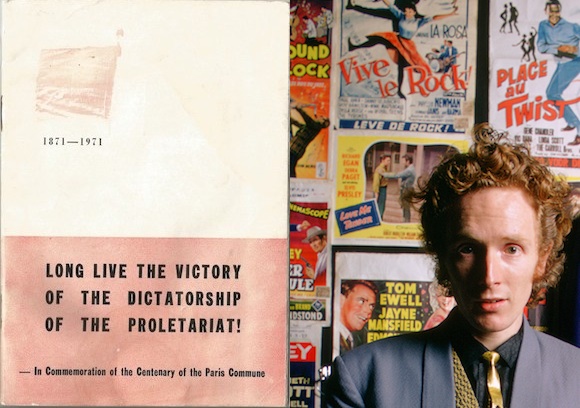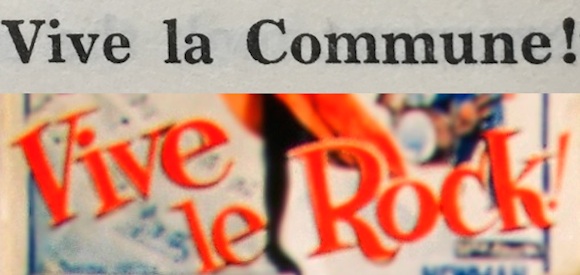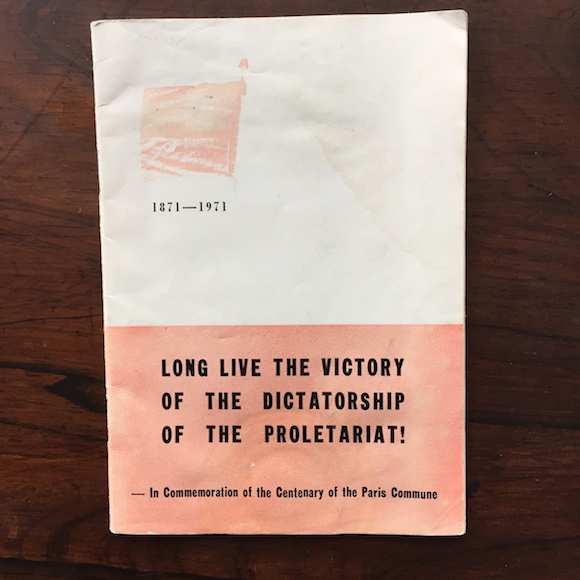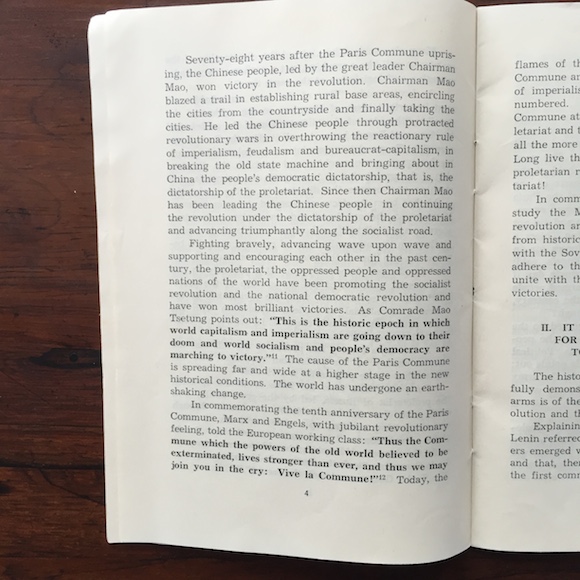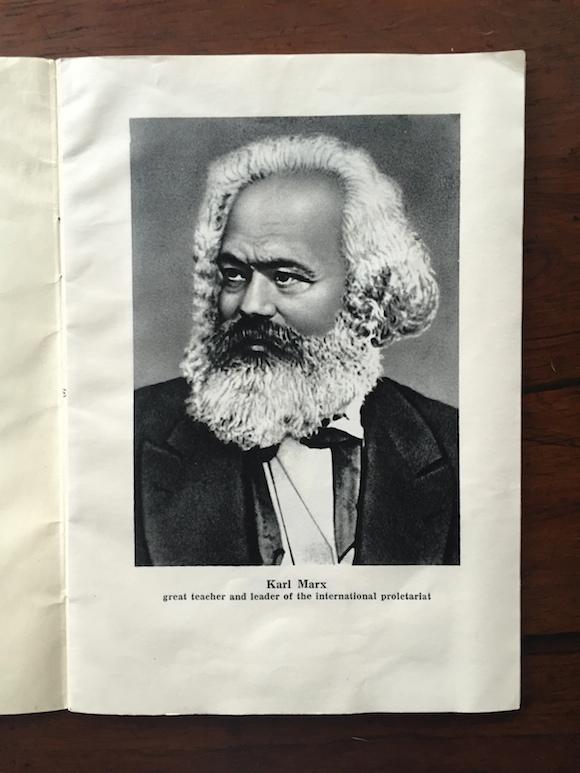From Vive la Commune! in 1881 to Vive le Rock! in 1972: How a Chinese Communist Party pamphlet inspired one of the great Malcolm McLaren designs
//From top left: Chinese Communist Party pamphlet, 1971; McLaren in Let It Rock 1972; Proclamation by Engels and Marx, 1881; Title lettering, Belgian film poster, 1958//
A year or so ago I established the source material for one of the first designs generated by Malcolm McLaren in the fashion partnership he conducted with Vivienne Westwood in the 70s and early 80s.
Now I can reveal the inspiration: text contained in an unprepossessing Communist booklet celebrating the short-lived “Paris Commune” government of 19th Century revolutionary France.

//McLaren in front of his and Patrick Casey’s display of 50s rock & roll movie posters in Let It Rock, January 1972. From photo by David Parkinson//
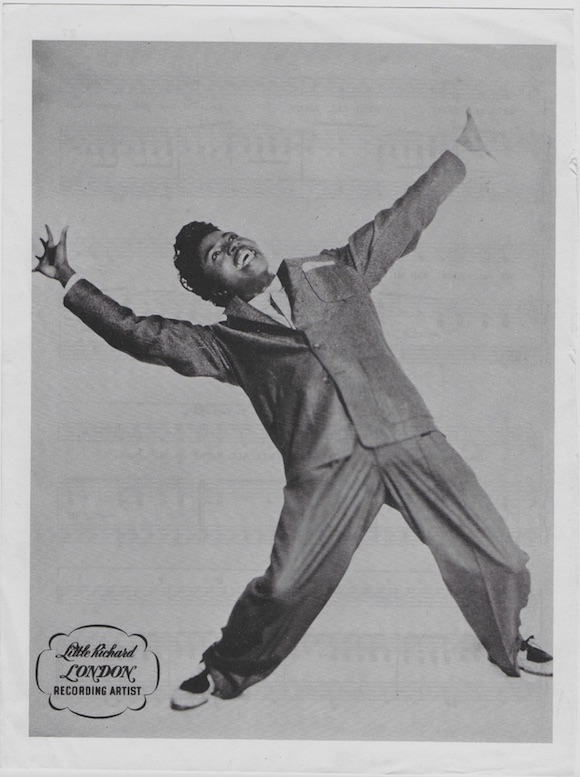
//London Records promotional image, 1958//
McLaren’s t-shirt design Vive le Rock! took its name and lettering from the title of a Belgian poster for the 1958 US rocksploitation flick Let’s Rock!; one of these decorated the walls of Let It Rock, the shop McLaren established at 430 King’s Road in 1971 with his fellow art-school graduate Patrick Casey before Westwood was brought on board.
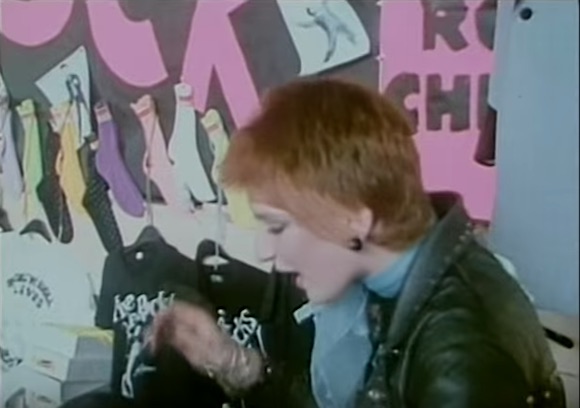
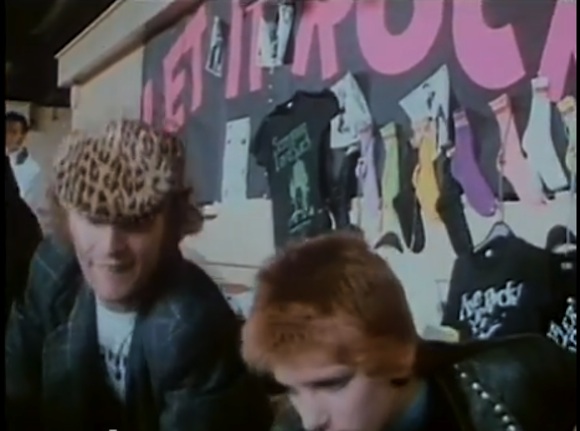
//Top: Promotional still pinned to board above sales assistant Yvonne Gold’s head. Above: A Vive le Rock! t-shirt is visible behind Gold, seen here with McLaren working on the Let It Rock stall at The London Rock N Roll Show, Wembley Stadium, August 1972. Stills from Peter Clifton’s film The London Rock N Roll Show//
In the summer of 1972 McLaren collaged the poster title with a promotional shot of Little Richard taken by John E. Reed in 1956; the resultant t-shirt was then sold along with others paying tribute to Jerry Lee Lewis, Chuck Berry and Screaming Lord Sutch at a rock n roll revival festival at London’s Wembley Stadium.
But the inspiration for the design came from a small, cheaply-produced Chinese Communist Party pamphlet marking the 100th anniversary of the Paris Commune, the Socialist government in existence in France in the spring of 1871.
In the 60s McLaren had aligned himself with various radical political positions, as a Maoist at one time and a Marxist another. He also maintained an abiding interest in the literature and in particular the dialectic produced by these movements; later, in the mid-70s, McLaren persuaded the New York Dolls into an image change as red leather- and vinyl-sporting crypto-Communists and had them brandishing copies of The Little Red Book.
But in 1972, as McLaren made his first steps towards fashion design by using the found materials at his disposal, the urgent title on the Belgian poster chimed with a passage written by Friedrich Engels and Karl Marx in 1881 and cited on page 4 of the CCP booklet.
Engels and Marx wrote on the 10th anniversary of the Paris Commune:
“Thus the Commune which the powers of the old world believed to be exterminated lives stronger than ever, and thus we may join you in the cry: Vive la Commune!”
Here was a condensation of the political energy McLaren wished to fuse with the insurrectionary power he’d already identified in 50s rock n roll music and style as a means of shaking up the status quo in fashion and society at large.
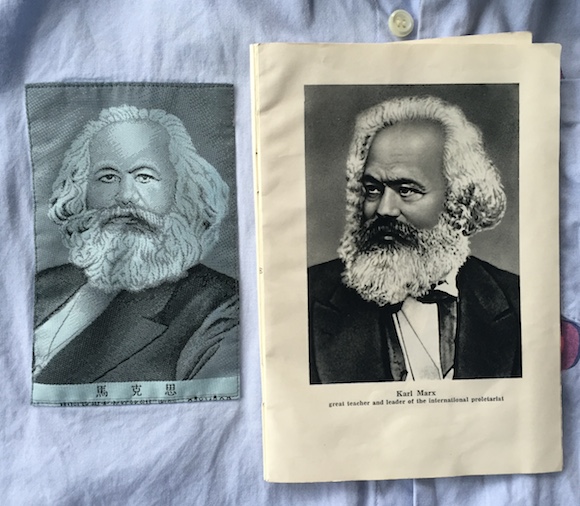
//With the portrait as featured on a reproduction of the McLaren/Westwood Anarchy Shirt produced by Fragment/Peel + Lift last year//
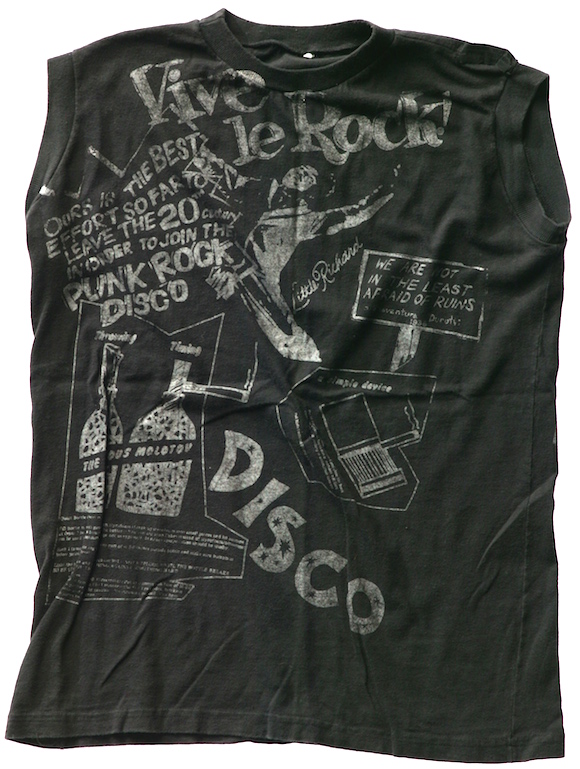
//Front of Vive le Rock/Punk Rock Disco shirt produced in 1978 for sale at 430 King’s Road in its phase as Seditionaries. Courtesy Hiroshi Fujiwara Collection//
And when McLaren revived Vive le Rock! for the overtly political 1978 double-sided design Vive le Rock/The Killer Rocks On, the revolutionary roots of the statement were in keeping with the more contemporary sources such as Abbie Hoffman’s Steal This Book and William Powell’s The Anarchist Cookbook, both published in the early 70s.
These examples and McLaren’s wider application of radical artistic and political material to his life’s work will be examined at the forthcoming exhibition Eyes For Blowing Up Bridges: From the Situationist International to Malcolm McLaren, which opens at John Hansard Gallery, Southampton, on September 26.
** This post was updated on April 20 2017 to include new research**

